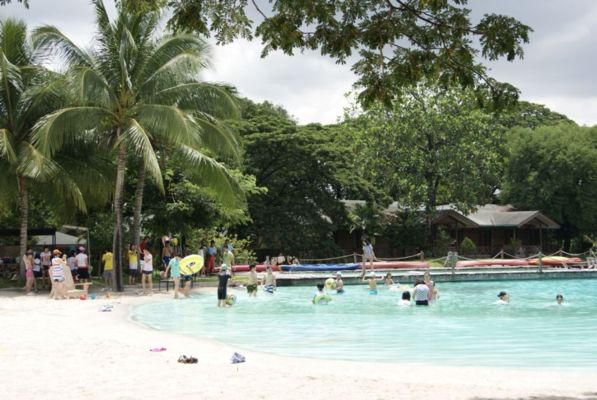A Rant About MenciaŌĆ” Another of SpainŌĆÖs Finest Exports
A Rant About MenciaŌĆ” Another of SpainŌĆÖs Finest Exports
Godello (white) and Mencia (red) are a couple of lesser-known ancient grape varietals hailing from the Galician interior of northwestern Spain, most notably in Valdeorras and Bierzo respectively. Recent unanimous acceptance of it being perhaps one of SpainŌĆÖs very finest grapes has meant that plantings, production, and exports of Mencia have been steadily increasing over the last two decades. Two weeks ago we looked at the glory that is Godello. In this issue we turn to the mysterious MenciaŌĆ” (pronounced Men ŌĆō THEE ŌĆō Ah)
As soon as an obscure ŌĆ£newŌĆØ (read: old-and-with-a-suspect-history-in-bulk-wine-production-but-with-a-slight-possibility-of-mass-appeal) grape varietal drops into the lap of a public relations firm we are deluged with comparisons to more readily recognised varieties. You see we are talking of a business that so often relies on familiarity for its marketing. In the case of Mencia, back in around 2002 word got out that it was the bastard son of Cabernet Franc, which is kind of interesting seeing as most of the wine-consuming world are yet to be convinced that the wondrous Cab Franc is any cop whatsoever. Mencia does share some aromatic profiling with Cab Franc, yes, but for a jaded old taster like myself the similarities end there. Rigorous DNA testing by paternity suit-greedy wine scientists has proven conclusively that SpainŌĆÖs Mencia will not be sharing in the fortunes of BordeauxŌĆÖs aristocracy any time soon. Unfortunately for Mencia (and perhaps fortunately for us) it has finally been genetically linked to PortugalŌĆÖs lowly JaenŌĆ” you know Jaen donŌĆÖt you? No? I didnŌĆÖt think soŌĆ” Jaen is Portuguese rusticity taken to the extreme, and you would very rarely see the family name printed upon any back label.
But MenciaŌĆ” well, the boy done goodŌĆ” he went and got himself a scholarship for a posh school, getting himself out of the ramshackle family village in the D├Żo. He read The Classics at a reputable university, learned some manners that would not seem out of place in the European court, and became the very model of the refined renaissance man/grape, moving out to Northwestern Spain with his university sweetheart Godello. One also has to note that there are a few scurrilous rumours to the contrary, telling of MenciaŌĆÖs journey to Bierzo on the Santiago de Compostella pilgrimage route and pointing to an alternative history with ancestral roots in the very north of EuropeŌĆ”
Amongst the spluttering classes Bierzo is often spoken of as being the ŌĆ£new PrioratŌĆØ, a distinction that does a disservice to the region by doing nothing to promote its uniqueness. Priorat, whilst undoubtedly capable of growing some outstanding wines, is planted mainly to Garnacha and Cari├▒ena, a couple of varietals that one can find throughout the Mediterranean (albeit usually under the Grenache and Carignan monikers.) Bierzo, on the other hand, truly loves itŌĆÖs ŌĆ£indigenousŌĆØ Mencia, a grape that one very rarely finds outside of the DOŌĆśs delimitation bar some plantings in the Ribeira Sacra and Valdeorras regions.
One of the many temptations of a Winemaker in a ŌĆ£newly discoveredŌĆØ region is to create a geographically indistinguishable bottling that hits the sweet spots of the international palate. This requires concocting a wine that, through all manner of jiggery-pokery during the vinification process, follows a style with a recent historical track record of popularity. In doing so one can almost be certain of garnering the praise, scores, and ŌĆ£gobs of fruitŌĆØ descriptors of a certain quotient of the wine press.
In Priorat, I feel that sadly too many producers have followed this route, and while I can fully understand the economic impetus for such a strategy, I am quite frankly weary of tasting yet another Super Spanish wine. By this I mean one that is over-ripe, over-extracted, over-oaked, and undoubtedly augmented with what appears to be steroidally-enhanced Cabernet, Merlot, an/or Syrah. Thankfully Mencia doesnŌĆÖt play well with others, as when blended with other varietals it immediately loses its singularity and, in my mind, its appeal. To reinforce my position on this, Luna Beberide, a pioneering producer who predicted the resurgence in the region back in the early 1980ŌĆ▓s, has been slowly reducing the percentages of non-native varietals as they come to realise the marvellous potential of the Mencia when it is given clearance to fly solo. Now, just in case you were wondering, the Bierzo DO does not allow for the inclusion of any grape but Mencia.
Strangely enough, despite the fact I may drone on about Bierzo MenciaŌĆÖs singularity, it is its diversity that is perhaps its greatest strength, as it is capable of producing a surprisingly wide range of wine styles. The last time I got a bit too ŌĆ£sommjizzyŌĆØ* about Mencia (and by that I mean indulgently wine-nerdy to the point of arousal) I read that there had been, to date, at least nine clones of the Mencia grape identified in the region. On a side note, IŌĆÖd never really thought of genetic instability as being a good thing until I was formally introduced to Pinot Noir. Now, when one takes this interesting clonal variation and multiplies it with the seriously heterogeneous nature of the soil structures in Bierzo, one can arguably come up with just as a good a definition of terroir as the Burgundians have been preaching for a considerable number of years.
*Cue a tirade of insults and rotten tomatoes*
Interestingly enough, despite the ever-growing buzz around the juice itself, the big players in the wine world have been unable to gain any significant footholds in the region. This is partly due to the extreme fragmentation of vineyard parcels through centuries of distribution in alignment with the Napoleonic inheritance laws (hello Burgundy!), and partly to do with the fact that in Bierzo, as is the case in many of the more ancient regions in Europe, selling oneŌĆÖs land is tantamount to declaring oneself destitute.
These minuscule and disparate parcels of vines owe their continued existence, in part, to bodies that I was originally taught to believe were the embodiment of pure EvilŌĆ” The Co-ops. If it were not for the proliferation of winemaking cooperatives in the 1940ŌĆ▓s and 50ŌĆ▓s many of the older Mencia plantings would have been abandoned, as for a farmer to produce wines from his own plots was simply economically unsustainable .
Back in 1989 when Bierzo gained its DO status there were around 4,500 growers but only a small number of grower/producers. Since then, almost 60 growers have chosen to make the move to bottling wine from their own estates, and while this can be seen as being a good thing for the curious palate, it is important to be aware of the fact that many of these wineries still have a long way to go and a lot to learn.
Wineries that I feel are certainly worth seeking out and currently making interesting and often exceptional wines:
Descendientes De J. Palacios : The most elegant, restrained, and focused wines of Bierzo. Even at the entry level (Petalos) the wines are very good indeed. The mineral definition between the single vineyard wines is astonishing, but Ricardo also has an understanding of assemblage that combines the soils of Bierzo to produce a wine that is truly greater than the sum of its parts. Oh, and the wines are biodynamic to boot!
Source: http://goodfoodrevolution.wordpress.com/2010/08/05/a-rant-about-mencia-another-of-spains-finest-exports/
Residents or Manila travel out of town to head north to Pampanga to relax, unwind and spend a few nights in the new hotel rooms situated right on the lake of Clearwater Resort in Clark Airbase. Many visitors and tourists enjoy the feeling of waking up by the lake. The sunrise produces a spectacular sight with the sunlight reflection on the calm surface of the three-hectare fresh water lake of this famous resort in Clark.
The safest getaway destination vacation spot near Manila convenient safe and accessible is Clearwater Beach Resort in Clark Pampanga, great for family bonding, hang out to unwind and relax near lake and trees, camping too.
When in Clark, make plans to relax and enjoy an evening at The London Pub located in Mimosa Leisure Estate of Clark Freeport Zone. This is where all the local executives, local and foreign tourists gather after a full day of fun or work.
This web site contains articles and information that will be helpful to visitors, residents and tourists traveling out of town from Manila on a short getaway to Subic, Angeles City, Pampanga and Clark Philippines. There are several web sites that contain information that might also be pertinent to what is happening in North Luzon.
For assistance with organizing and planning weddings and garden receptions, log on to http://www.PhilippinesWeddingVenue.com
For assistance with lodgings, accommodations, hotels and resorts near Manila in Subic, Pampanga, Angels City and Clark Philippines log on to http://www.HotelClarkPhilippines.com
While in Clark, one might as well add to the itinerary a visit to the famous Clark Wine Center, the largest wine shop in Philippines which offers over 2000 selections of fine vintage wine from all wine regions, vintages spanning over 50 years covering all price ranges.
http://www.ClarkWineCenter.com
If this article about Clark is useful to you, please click here to contact us to tell us what more you wish to know about this article or Clark Philippines, which can be something about Clark investment, about Clark resorts, about Clark Swimming and Leisure or simply general news about Clark.
Please send questions to Editor@ClarkPhilippines.com. Leave your name, email address, contact numbers and we will get back to you as soon as possible. Information received will not be disclosed.













